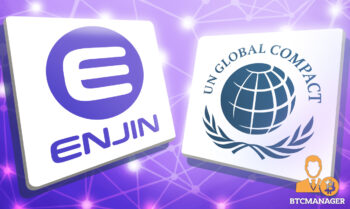2023-10-6 03:00 |
According to a recent report by Bloomberg, Ledger, a prominent hardware wallet manufacturer catering to crypto investors, has announced a 12% reduction in its workforce as part of a strategic effort to navigate an extended industry downturn.
The decision comes in response to macroeconomic challenges that have hindered revenue generation, prompting the company to prioritize the long-term sustainability of its business.
Market Challenges Force Ledger CEO To Make ‘Difficult Decisions’Ledger’s CEO and Chairman, Pascal Gauthier, highlighted the need to make difficult decisions in the face of prevailing market conditions. In an email sent to staff, Gauthier acknowledged the impact of macroeconomic headwinds and emphasized the importance of preserving resources for the company’s future. Gauthier further claimed:
Macroeconomic headwinds are limiting our ability to generate revenue. We must continue to make decisions for the longevity of the business
While a Ledger spokesperson confirmed the layoffs, details regarding the affected employees were not disclosed. This development comes as the crypto industry grapples with various challenges, including rising interest rates and increased regulatory scrutiny.
These factors have contributed to a turbulent environment characterized by reduced trading volumes, decreased funding, and a notable decline in interest and prices of once-popular segments like non-fungible tokens (NFTs).
Researchers at dappGambl estimate that approximately 95% of over 73,000 NFT collections have lost significant value.
In response to these industry-wide struggles, numerous crypto companies, including large exchanges, trading firms, and service providers, have been compelled to implement cost-cutting measures and downsize their workforce.
Recent examples include blockchain data firm Chainalysis, which laid off 15% of its staff, and blockchain technology company R3, which let go of over a fifth of its employees.
Ledger’s Valuation Soars To €1.3 BillionEstablished in 2014, Ledger has emerged as a leading provider of secure hardware devices designed to safeguard private keys, which grant users access to their blockchain assets.
Heightened concerns among users regarding the safety of their holdings, exacerbated by the fall of crypto exchanges like FTX and high-profile hacks in the past year, led to increased demand for Ledger’s products and those of its competitors.
Per the report, earlier this year, Ledger successfully raised approximately €100 million ($109 million) in a funding round, valuing the company at around €1.3 billion.
This valuation closely aligns with the price tag assigned by investors during the bullish market 2021. Ledger asserts that its devices store over 20% of the world’s cryptocurrencies and 30% of the global NFTs.
The decision to downsize the workforce reflects Ledger’s response to the challenging market conditions as the company seeks to adapt and navigate the evolving landscape of the crypto industry.
Featured image from Shutterstock, chart from TradingView.com
Similar to Notcoin - TapSwap on Solana Airdrops In 2024
Vice Industry Token (VIT) на Currencies.ru
|
|





